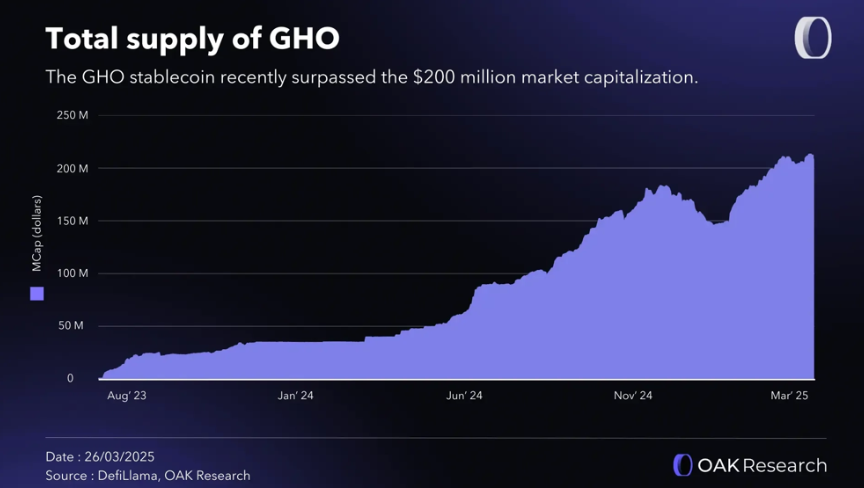-
The introduction of GHO as a decentralized stablecoin marks a significant evolution in the Aave protocol, offering an innovative, crypto-backed alternative to traditional stablecoins.
-
Designed with over-collateralization and community governance at its core, GHO embodies a shift toward transparency and user empowerment in the DeFi landscape.
-
According to Aave’s founder, Stani Kulechov, “GHO is already bringing in $2.1M in annualized revenue at a tiny 35M mint cap,” showcasing its potential for scaling in the DeFi space.
Explore GHO, Aave’s new decentralized stablecoin that prioritizes transparency and community governance, setting a new standard in the DeFi stablecoin landscape.
Understanding GHO: A New Era in Decentralized Stablecoins
GHO is not just another stablecoin; it represents a groundbreaking approach within the decentralized finance (DeFi) sector. Launched by Aave in July 2023, GHO operates on principles of complete transparency and over-collateralization. Backed by various crypto assets, GHO’s flexibility and governance through the Aave community set it apart from traditional fiat-pegged options like USDT and USDC. This unique backing system ensures that each GHO token’s credibility can be verified on-chain, promoting a level of trust often missing in centralized counterparts.
The Mechanisms of GHO: How It Operates
The minting process for GHO is straightforward yet innovative. Users deposit a specific amount of approved collateral into Aave and can mint GHO based on this, following the concept of a crypto-backed loan. The model mandates that borrowers must provide collateral exceeding the value of the GHO borrowed, establishing a safety margin that promotes price stability. This collateral acts as a protective measure, ensuring GHO remains closely tied to its $1 peg by automating liquidations if collateral values drop.
Key Features That Make GHO Stand Out
One of GHO’s prominent characteristics is its integration with the Aave ecosystem. Users who stake AAVE can access discounted rates on GHO loans, effectively turning GHO into a utility-driven stablecoin that rewards loyal participants. The interest accrued on GHO loans enriches the Aave DAO treasury, ensuring a sustainable and potentially lucrative revenue stream. With the initial cap for GHO set at 35 million, there are projections indicating substantial earnings for the DAO as its utilization rises.
Use Cases and Growing Adoption of GHO
GHO’s versatility opens the door to various use cases within the DeFi sector. Users can engage in transactions, facilitate loans, or add GHO to liquidity pools to benefit from associated fees. While its adoption has commenced at a measured pace, increased incentives and Aave’s expanding support have initiated a trajectory toward broader acceptance, with expectations of its circulating supply surpassing $200 million by early 2025.

Navigating Risks Associated with GHO
Even with its advantages, GHO faces notable challenges, particularly during its early adoption phase, where it frequently traded below its $1 target. Fortunately, the proactive measures by Aave governance in adjusting interest rates and launching the GHO Stability Module have proved effective in stabilizing its price. Yet, users should remain aware of the inherent risks tied to its crypto-collateral backing—fluctuations in underlying assets can significantly influence GHO’s stability.
Evaluating GHO: A Weighing of Pros and Cons
| Advantages | Challenges |
| Decentralized and auditable on-chain | Absence of direct fiat redemption options |
| Governance-driven by the Aave community | Vulnerability to market swings in collateral |
| Strong value proposition through over-collateralization | Adoption still in nascent stages outside Aave |
| Interest proceeds benefit the Aave treasury | Risk of smart contract exploitation |
GHO as an Investment Option: Is It Worth It?
With its unique positioning as a decentralized, community-backed stablecoin, GHO presents a differentiated option for users engaged in the DeFi space. Its strong governance, transparency, and integration within the Aave ecosystem advocate for its potential as a valuable asset. However, as with any stablecoin, potential investors should contemplate the nature of their investment goals; GHO primarily serves as a tool for stability and utility rather than a vehicle for speculative gains.
